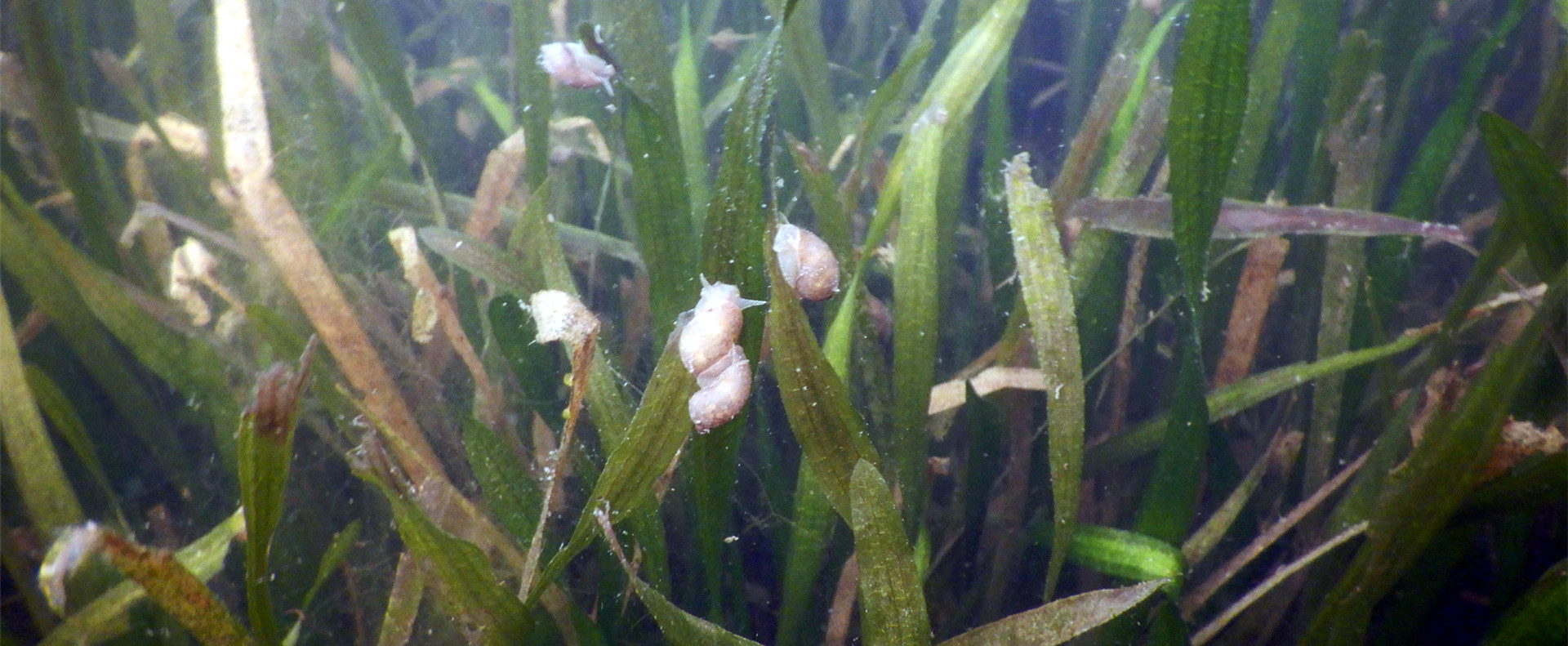
Newsroom
Cascading Effects of Benthic Fish Impede Restoration of Clear Water Phase in Shallow Lakes

The snails (Radix swinhoei) can enhance submerged macrophytes growth by consuming the periphyton on the leaves and reducing the shading effects of periphyton. (Credit: IHB)
For shallow eutrophic lakes to maintain a clear water status, submerged macrophytes are crucial. They are directly affected by fishes herbivory as well as indirectly by fish-invertebrate-periphyton interactions, a which is not well understood but vital to lake managements.
Earlier studies recommended transplanting submerged macrophytes and rehabilitating snails, but sediment disturbance caused by benthic fish may hamper their success. Therefore, the study of the cascading effect of benthic fish in the restoration of submerged macrophytes is needed.
Recently, a research team led by Prof. CAO Te from the Institute of Hydrobiology (IHB) of the Chinese Academy of Sciences demonstrated that benthic fish (Misgurnus anguillicaudatus) degraded the water quality and negatively impact the submerged macrophyte restoration, but snails (Radix swinhoei) consumed the periphyton and reduced its shading on the macrophytes and thus enhanced plant growth, though this did not offset the negative effects of benthic fish. The study was published online in Journal of Environmental Management.
In this study, the researchers conducted a mesocosm experiment in which a fully factorial design comprising eight combinations of submerged macrophytes, snails, and benthic fish at two different levels (presence vs. absence) were used to examine cascading effects caused by benthic fish on reestablishment of clear water state dominated by macrophytes. This was the first time that the ecological restoration of submerged macrophytes has been studied in combination with multiple elements in the freshwater ecosystem.
The researchers evaluated the effects of benthic fish, snail and macrophyte on water quality by using Multivariate factorial analysis (three-way ANOVA). The results showed that the water quality was best in the presence of macrophytes alone or in combination with snails, and the water quality was worst when the benthic fish were introduced alone or both the benthic fish and snails were introduced.
Moreover, the impact of benthic fish disturbance and snail herbivory on the growth of macrophyte was analyzed. The macrophyte biomass was enhanced by 15% when snails were introduced, decreased by 50% when benthic fish were introduced, and reduced by 24% when benthic fish and snails were both introduced.
To detect the direct and indirect effects of fish and snail on macrophyte, a structural equation model (SEM) was used. The researchers found that benthic fish negatively affected the macrophyte indirectly by stimulating the growth of phytoplankton and periphyton, whereas the snails positively affected the macrophyte by grazing periphyton.
This study implied that the removal of benthic fish might be a useful ecological control method for submerged macrophytes restoration and water quality improvement in subtropical, eutrophic, shallow lakes following external nutrient loading reduction.